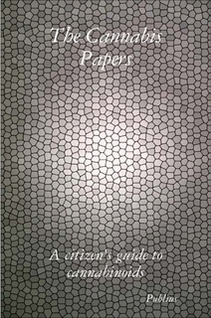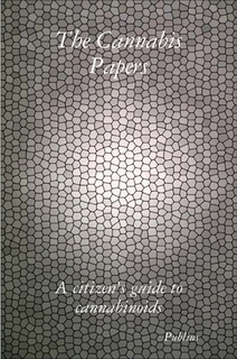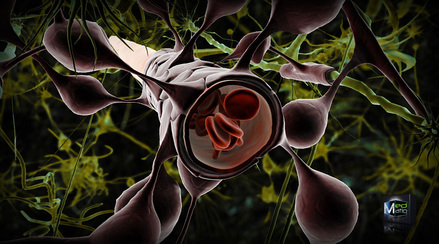 The Cannabis Papers by Publius (2011)
The Cannabis Papers by Publius (2011) The Cannabis Papers: A citizen’s guide to cannabinoids (2011)
By Publius
Today’s science roundup looks at four articles on how the cannabinoid system (CS) modulates our health through homeostasis ~ including one on the de-homeostatic (harmful) effects caused by chronic alcohol use on one’s CS. The line-up links to 2014 PubMed articles discussing: heteromerization, chronic alcohol harms, sensory information salience and stress response attenuation.
I. Heteromerization (GPR55 and CB2) and the CS
“In HEK293 cells expressing GPR55 and cannabinoid CB2 R receptors, heteromers that are unique signaling units are formed. The signaling by agonists of either receptor is governed i) by the presence or absence of the partner receptors (with the consequent formation of heteromers) and ii) by the activation state of the partner receptor.”
Heteromerization of GPR55 and cannabinoid CB2 receptors modulates signaling.
Balenga NA, Martínez-Pinilla E, Kargl J, Schröder R, Peinhaupt M, Platzer W, Bálint Z, Zamarbide M, Dopeso-Reyes I, Ricobaraza A, Pérez-Ortiz JM, Kostenis E, Waldhoer M, Heinemann A, Franco R.
Br J Pharmacol. 2014 Jul 22. doi: 10.1111/bph.12850. [Epub ahead of print]
PMID: 25048571 [PubMed - as supplied by publisher]
Related citations
II. De-Homeostasis (Chronic Alcohol Use) and the CS
“Chronic use of alcohol is associated with structural and functional alterations in brain areas that subserve cognitive processes. Of particular importance is the prefrontal cortex (PFC) that is involved in higher order behaviors such as decision making, risk assessment and judgment. … Overall, these results suggest that ethanol's down-regulation of cannabinoid signaling results in altered network activity in the prefrontal cortex.”
Chronic ethanol alters network activity and endocannabinoid signaling in the prefrontal cortex.
Pava MJ, Woodward JJ.
Front Integr Neurosci. 2014 Jul 18;8:58. doi: 10.3389/fnint.2014.00058. eCollection 2014.
PMID: 25100953 [PubMed] Free Article
Related citations
III. Homeostasis (Sensory Information) and the CS
“Emerging evidence from both basic and clinical research demonstrates an important role for endocannabinoid (ECB) signaling in the processing of emotionally salient information, learning, and memory. Cannabinoid transmission within neural circuits involved in emotional processing has been shown to modulate the acquisition, recall, and extinction of emotionally salient memories and importantly, can strongly modulate the emotional salience of incoming sensory information.”
The role of cannabinoid transmission in emotional memory formation: implications for addiction and schizophrenia.
Tan H, Ahmad T, Loureiro M, Zunder J, Laviolette SR.
Front Psychiatry. 2014 Jun 30;5:73. doi: 10.3389/fpsyt.2014.00073. eCollection 2014. Review.
PMID: 25071606 [PubMed] Free PMC Article
Related citations
IV. Homeostasis (Stress Response) and the CS
“Endocannabinoids are produced on demand and function to attenuate many of the physiological effects of the stress response. The endocannabinoid system is made up of cannabinoid receptors, the fatty acid signaling molecules that bind to and activate these receptors, and the enzymes that synthesize and catabolize these endocannabinoid signaling molecules.”
The endocannabinoid system modulates stress, emotionality, and inflammation.
Crowe MS, Nass SR, Gabella KM, Kinsey SG.
Brain Behav Immun. 2014 Jun 19. pii: S0889-1591(14)00172-X. doi: 10.1016/j.bbi.2014.06.007. [Epub ahead of print] Review.
PMID: 24953427 [PubMed - as supplied by publisher]
Related citations
Brain Video:
Why Do Some People Become Alcoholics?
Posted by Bryan W. Brickner





 RSS Feed
RSS Feed
